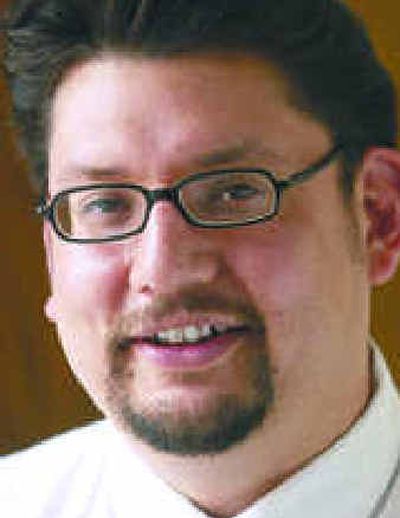Computer in error? Count this guy in

Computers are supposed to be our friends.
One Eastern Washington University math professor does research that shows us how computers aren’t exactly always friendly.
To boil down decades of research into a few lines, Yves Nievergelt asserts that the computer foundation we take for granted in our daily lives is unstable.
Soldiers die from friendly fire and NASA land rovers get lost from the kind of computer errors Nievergelt studies.
As his ideas go, computers are such smarty pants and think so fast that they get themselves into trouble, which causes us problems with their mistakes.
Whenever a computer is asked to do something, it must make billions of little calculations. And every time the computer executes a thought, which it does billions of times a minute, it comes out with an answer. That answer is rarely an even number. Instead, it’s a long complicated figure full of decimals.
Computers need things neat. They are built on logic. So what a computer does is round off the numbers. The extra minuscule digits get cut off.
Now, when you do that a few billion times, the figure gets skewed. The answer it spits out on very complex calculations starts to become wrong.
“Things like word processing are pretty much perfect,” he said. There aren’t that many calculations required.
That’s a huge relief, although there goes my excuse for misspelling someone’s name.
“I had it right, I’m sure my computer made a compounded calculation error!”
Nievergelt is a serious and published professor, but his research sounded like science fiction to me. How many movies can you name where computers eventually get so smart that they gain consciousness and decide all humans should die?
This is an established field. Since the ‘70s, scientists have known about these computational errors.
Numerical analysts have tried to call attention to rounding errors, but the matter gets little attention, Nievergelt said.
Computer designers are well aware of the computational error factor, but it’s not something most scientists worry about, he said.
“They should, but they don’t,” Nievergelt said.
Call it the broccoli-variety of math research.
“It’s an extremely tedious kind of math. It’s not something like space travel. You have to stick to very picky details that have to deal with the inner working of the computer.”
A few years ago, Nievergelt gained some academic recognition for discovering a fatal flaw in a well-known computer system and offering a correction.
He won’t give details. It’s kind of private, he says.
Essentially, he found a way to make the computer’s computations more accurate.
So here I am, in a dark and cluttered math professor’s office, talking to a man who’s corrected one of the smartest and most-complex systems on the planet, a computer.
A lesser person would feel like a half-wit. I merely felt like a dim bulb.
Nievergelt actually stumbled into this type of computational error research four years ago while doing other work.
His real passion is figuring out the shape of a large object just by having a small surface area sample. It’s a tool of archaeologists. Take for example if a team of diggers wanted to excavate a dome roof from an ancient arena. Nievergelt’s research determines the size of the entire artifact, all from a small exposed piece.
Good work if you can get it.
So I ask Nievergelt, what’s it take to become an expert in a field of study that’s probably too complicated for most people to follow.
It’s about persevering, he said.
Publishing papers is like entering a boxing ring with both hands tied behind your back, he said. Reviewers will knock down what they think is wrong, and you have to go back to the drawing board.
“You have to have the ability to weather failure after failure after failure.”
And try again.